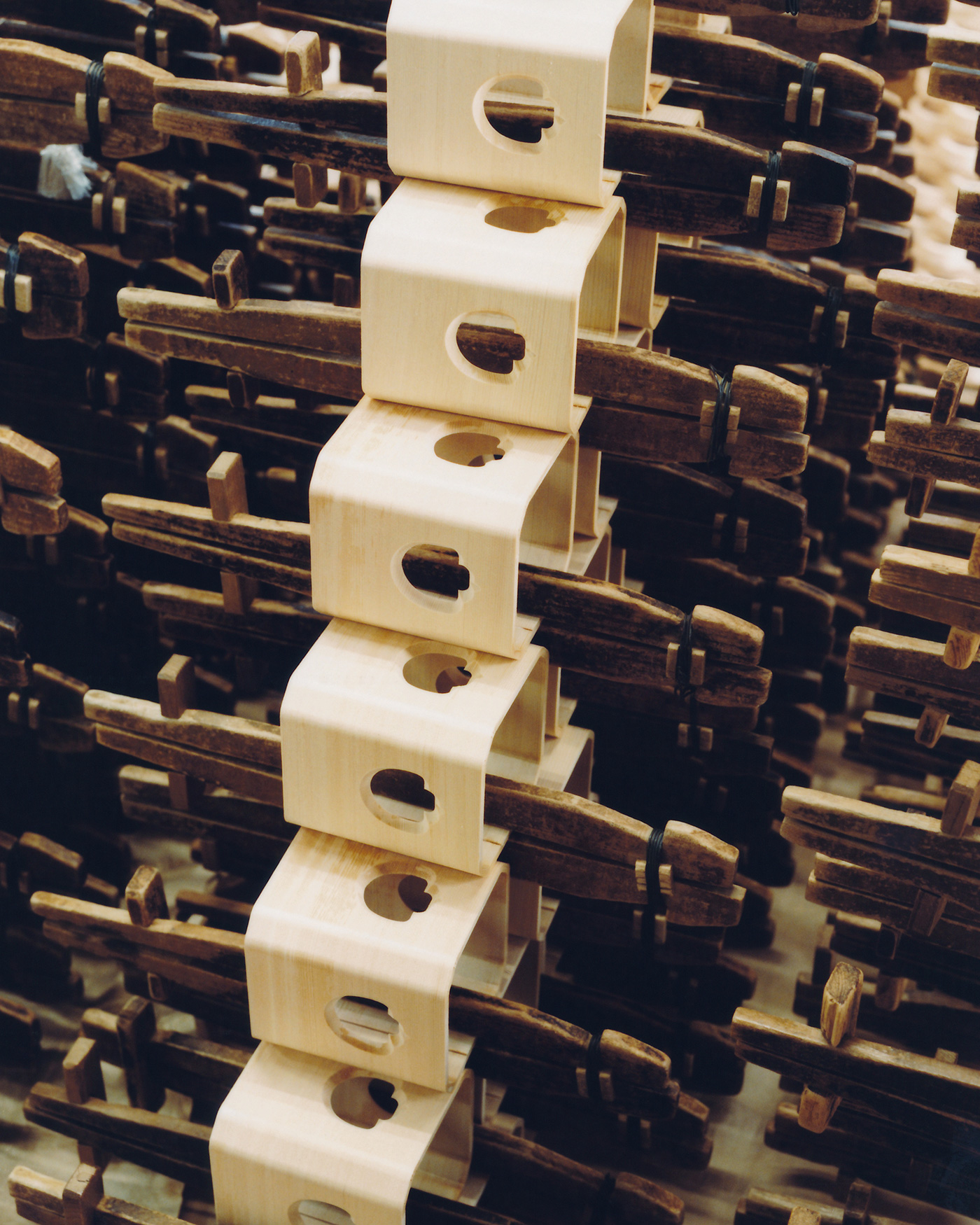Nagoya Festival Decorations
Festival decorations and dolls have long been cherished as luxury items to celebrate a child’s birth and symbolize hope for their healthy growth. In Aichi Prefecture, nestled between Tokyo and Kyoto — the two renowned doll-making regions — a unique style of festival decorations has been recognized as a traditional craft. On January 15th, 2021, “Nagoya Festival Decorations” became an official name for the exquisite dolls, snow caves (bonbori) and streamers (noboribatarui) that have been passed down for generations in this area. We had the opportunity to talk to Shinya Kitagawa, a second-generation doll maker and traditional craftsman of Nagae Traditional Dolls. He is also a winner of the highest award in both the technical and planning divisions of the Chubu Doll Festival Products Competition.

It was only in January 2021 that “Nagoya Festival Decorations” were designated as a traditional craft. Could you explain why it took so long to get this recognition?
To be designated as a traditional craft by the government, there is a fundamental requirement that the craft must have a history of over 100 years in that region and must still be practiced today. Many people associate our festival dolls with the ones that were custom-made for the princesses of the Owari Tokugawa family in the Edo period, but we cannot be sure that those dolls were actually produced in Nagoya. They might have been made elsewhere. We could not find any proof that the dolls were made in this area 100 years ago, such as labels or signatures. It was only after we convinced the Ministry of Economy, Trade and Industry that a doll display at the Nagoya City Museum was “undoubtedly more than 100 years old,” and we successfully completed all the paperwork, examinations and final tests on its lineage and the techniques that are still carried on today, that we finally achieved the designation as a traditional craft. It was a dream come true for the guild members who had been striving towards that goal for four decades.

How do Nagoya Festival Decorations, which have been designated as traditional crafts, differ from festival dolls from other regions?
The items that have been designated as traditional crafts are dolls, snow caves (bonbori) and streamers (noboribatarui). There are also other places where dolls have been designated as traditional crafts, such as Kyoto, Tokyo, Shizuoka (Suruga Hina Dolls) and Saitama (only Iwatsuki), but Nagoya dolls have their own distinctive features. They blend the flamboyance of Kyoto and the simplicity of Tokyo in a harmonious way. The use of colors, the showiness and the ornamentation are all unique. In the past, Nagoya was known for mass-producing dolls to supply to wholesalers. These dolls were produced by craftsmen who focused on making large quantities. There were hardly any artists who paid attention to each and every detail. The fact that they did not leave their names as artists was one of the reasons why we could not trace where and when they were made.
Your shop, Nagae Traditional Dolls, has been in business since 1967. What kind of products do you create?
It was founded by my wife’s father, Master Nagae (Yoshihiko Nagae). He always had a knack for working with his hands. His uncle, a doll maker in Nishiharu, saw this and took him under his wing. Many do not manage to become independent even after 10 years of apprenticeship, but Master Nagae was able to open his own doll shop in Fuso, which is a great location.
Doll making is traditionally a collaborative process, with different craftsmen responsible for different parts. For example, the head master might make the face, while a different craftsman would make the backdrop and snow cave decorations. We specialize in doll bodies, which means we take care of the body making, costume making (cutting, lining, sewing), dressing and posing of the arms. In other words, we handle everything except for the head and limbs of the doll in-house. There are about 100 steps involved, including the making of small parts.

10 years of apprenticeship and 100 steps… It sounds like it takes a lot of time and skill to learn the craft. What are some of the challenges?
I became an apprentice after marrying my wife. I was captivated by Master Nagae’s skills. Before that, I was a salaryman. It took me 10 years to complete my training. Master Nagae’s philosophy is “watch and steal,” but even when you try to standardize the process, there’s always going to be individual differences. That’s the hard part. There are things you can’t teach. All you can do is “watch and steal.” It takes a lot of time.
So it’s a matter of trial and error based on watching and “stealing” the master’s work?
It would be nice to have some practice pieces, but we don’t have room for error because the materials are limited. Especially when posing the arms, you have to get it right the first time. Master Nagae would check my work, but he would only tell me to “give it a try” and “use my head.” The best compliment I ever got from him was “not bad.” It’s very intense. You have to memorize what you see and imagine how to do it yourself. Once you get the hang of it, you just keep polishing your skills. But there is no end to it. There is no perfect form. Master Nagae is truly amazing, and I don’t say that because he is family. His inspiration and sensibility are beyond imitation. Even after making dolls for over 60 years, he still finds new ways to improve his work.







